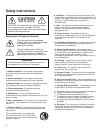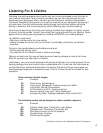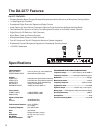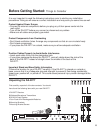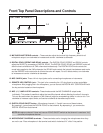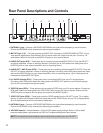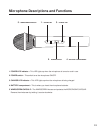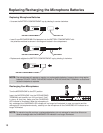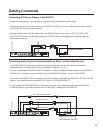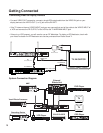
Microphone Basics
8
Avoiding Feedback
Acoustic feedback can be a problem in any sound system. Audio systems that include wireless microphones are
somewhat more prone to feedback than those using only wired microphones, simply because the freedom of
movement with wireless makes it more likely that the user will walk in front of the speakers. Take steps to make it
less likely that the wireless user will walk in front of the speakers. These steps can include more rehearsal time,
markings on the floor, relocation of the speakers and several other options.
More Tips to Avoid Interference
• Lower the sound level of the speakers nearest the wireless user and increase the level of other speakers to
compensate. If possible, rotate the nearest speakers to point them slightly away from the wireless user.
• Make certain that the transmitter gain is set appropriately for your application. If the transmitter gain is set too
high, it may cause overloading of the wireless circuits and increase the chances of feedback.
• Most standard techniques for reducing feedback will also work with wireless microphones. Because of the
increased chance of feedback with wireless, understanding and being able to apply these techniques will
be helpful.
• Request that the talker speak louder into the microphone so microphone levels can be reduced.
• Reduce the distance from the talker to the microphone.
• Reduce the number of open microphones. Each time this number is halved, the sound system output can be
increased by 3dB.
• Move the loudspeaker farther away from the microphone.
• Move the loudspeaker closer to the listener.
• Use an equalizer/feedback reducer to cut the frequency bands in which the feedback occurs.
DA-2277 & Stage Monitors/P.A. System
• Place the stage monitor directly behind the microphone.
• Locate the P.A. loudspeakers so that they point away from the rear of the microphone.
(With the speakers located in these positions, the possibility of feedback is greatly reduced).
• Always check the stage setup before a performance to ensure optimum placement of microphone and monitors.
IMPORTANT: Every wireless microphone installation is a unique situation, and can present a variety of problems.
Never attempt a live performance without first conducting a "walk through" test of the system in the performing area.
If major changes (additional wireless systems or intercoms, relocation of scenery, etc.) have been made since the
last walk–through test, check the wireless system again—as close to performance time as possible.




